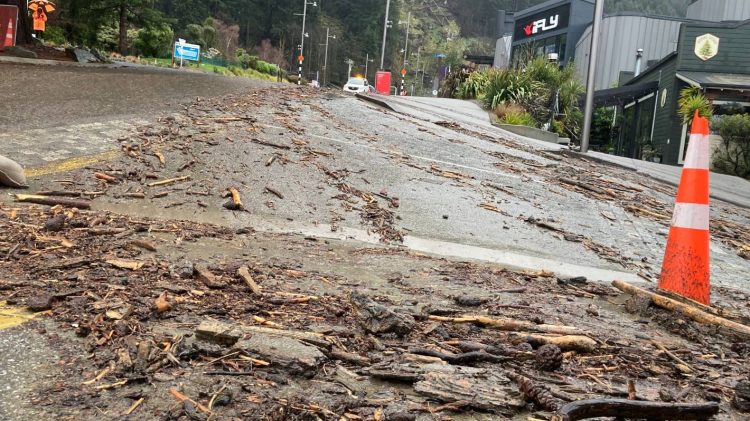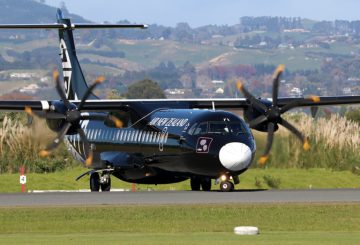Ang South Island ay nakikipagbuno sa mga sunog, baha, at pagsiklab ng cryptosporidium sa isang magulong linggo ng panahon. Ang kaguluhan na ito ay dumating bago ang inaasahang abalang panahon ng paglalakbay ng mga pista opisyal sa paaralan ng tagsibol. Parehong idineklara ng Queenstown at Southland ang mga estado ng emerhensiya. Bilang karagdagan, ang supply ng tubig ng Queenstown ay may paunawa sa tubig na pigsa sa lugar dahil sa pagsiklab ng cryptosporidium.
Sa gitna ng mga hamon na ito, ipinahayag ng isang babae ang kawalan ng katiyakan ng kanyang pamilya tungkol sa kanilang nakaplanong paglalakbay sa Queenstown, na nagsasabing ang mga kamakailang kaganapan ay ginagawang hindi gaanong kaakit-akit ang patutunguhan.
Sa pagtugon sa sitwasyon, ipinahayag ng punong opisyal ng integridad ng pagpapatakbo ng Air New Zealand na si David Morgan noong Biyernes na ang mga pasahero na nag-book ng mga flight papunta o mula sa Queenstown, Invercargill, at Dunedin sa pagitan ng Setyembre 21 at Setyembre 28 ay maaaring mag-reschedule ng kanilang mga plano sa paglalakbay. Maaari silang mag-opt para sa isang petsa bago ang Oktubre 5 sa anumang iba pang patutunguhan ng Air New Zealand nang hindi nagkakaroon ng anumang singil. Bagaman walang bayad para sa pagbabago ng mga patutunguhan, kailangang masakop ng mga pasahero ang anumang pagkakaiba sa mga gastos sa pamasahe. Bilang kahalili, ang mga customer ay maaaring makatanggap ng isang kredito, may bisa sa isang taon, upang mag-book mamaya.
Noong nakaraan, iniulat ng Air New Zealand ang Queenstown bilang nangungunang patutunguhan para sa mga pista opisyal sa paaralan, inaasahan ang humigit-kumulang 49,000 manlalakbay mula sa Auckland, Christchurch, at Wellington.
Sa kabila ng estado ng emerhensiya, kinumpirma ng isang tagapagsalita mula sa Destination Queenstown na ang sentro ng bayan ay nananatiling bukas. Pinaalalahanan nila ang mga bisita na pakuluan ang kanilang inuming tubig at binigyang diin ang kahalagahan ng mabuting kalinisan sa kamay.
Inihayag ng NZ Ski ang pagsasara ng Coronet Peak para sa panahon dahil sa malakas na pag-ulan. Sa una, ang ski field ay nakatakdang manatiling bukas hanggang Oktubre 1. Bilang karagdagan, pansamantalang isinara ng The Remarkables ski field, kahit na sa kamakailang ulan ng niyebe, upang maiwasan ang mga tao na maglakbay sa mga mapanganib na kalsada.
Jolanda Cave, ng Ngāi Tahu Tourism, ibinahagi na ang Dart River Adventures sa Glenorchy ay pansamantalang hindi naa-access ngunit inaasahang pag-access sa kalsada na maibabalik sa lalong madaling panahon.
Ang Queenstown Airport ay nanatiling pagpapatakbo noong Biyernes, na may dalawang flight lamang mula sa Air New Zealand na nakansela. Ang mga serbisyo ng bus ng InterCity ay halos hindi nagbabago, na nagbabawal sa pagkansela ng isang ruta sa pagitan ng Queenstown at Milford Sound.
Naglabas ang MetService ng isang mabigat na babala sa ulan para sa Canterbury Lakes, na nagtataya ng karagdagang pag-ulan na 70mm hanggang 100mm hanggang 9pm.
Hinihimok ang mga manlalakbay na manatiling na-update sa pinakabagong mula sa mga airline, konseho at mga awtoridad sa kalsada, at sumangguni sa mga magagamit na gabay kung ang kanilang mga plano ay nagambala.




























































